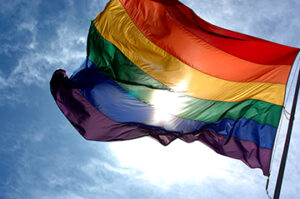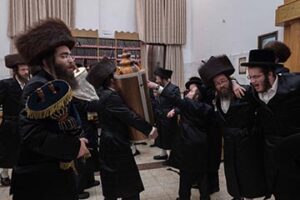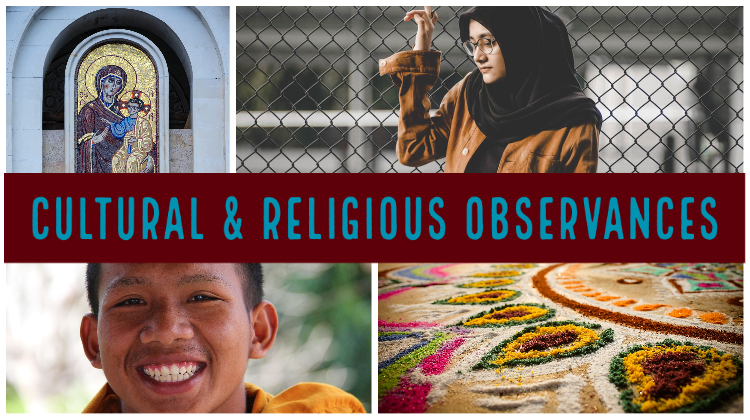LGBT History Month
Culture/religion: National observance
Date: October

LGBT History Month is a month-long annual observance of lesbian, gay, bisexual and transgender history, and the history of the gay rights and related civil rights movements. It is observed during October in the United States, to include National Coming Out Day on October 11. LGBT History Month originated in the United States and was first celebrated in 1994. It was founded by Missouri high-school history teacher Rodney Wilson.
Sources:
National Disability Employment Awareness Month
Culture/religion: National observance
Date: October

National Disability Employment Awareness Month, recognized annually in October, is a national campaign through the Department of Labor’s Office of Disability Employment Policy. It began as an effort to raise awareness about disability employment issues and celebrates the many and varied contributions of America’s workers with disabilities.
Sources:
National Disability Employment Awareness Month, Department Of Labor’s Office of Disability Employment Policy
Italian American Heritage Month
Culture/religion: National observance
Date: October

Italian American Heritage Month is celebrated to honor the achievements and contributions of Italian immigrants and their descendants living in the United States.
First celebrated in 1989, events are usually held to celebrate and educate the public about Italian American history.
Sources:
Italian-American Heritage and Culture Month, Wikipedia
Mid-Autumn Festival
Culture/religion: Chinese heritage
Date: October 1

Mid-Autumn Festival is the second most important festival in China after the Chinese New Year. Mid-Autumn Festival is celebrated on the 15th day of the 8th lunar month, which is always in the middle of the autumn season in China.
The day is also known as the Moon Festival. At this time of year, the moon is believed to be at its fullest and brightest, and Chinese people worship the moon and appreciate the full moon on that day. In Chinese culture, a full moon symbolizes reunion, so this is a time to reunite with families, worship and appreciate the moon together and enjoy a reunion dinner.
Sources:
Mid-Autumn Festival – Chinese Moon Festival and Second Grandest Festival, Travel China Guide
Sukkot
Culture/religion: Judaism
Date: October 3-9

Sukkot is a week-long Jewish holiday occurring five days after Yom Kippur. Sukkot celebrates the gathering of the harvest and commemorates the miraculous protection God provided for the children of Israel when they left Egypt.
The Torah refers to Sukkot by two names: Chag HaAsif (“the Festival of Ingathering” or “Harvest Festival”) which is a time to express appreciation of the bounty to be harvested; and Chag HaSukkot (“Festival of Booths”) which commemorates the temporary dwellings God made to shelter ancestors on their way out of Egypt.
For seven days and night, meals are taken in the sukkah (a hut built to provide shade). The goal is to spend as much time in the sukkah as possible, typically eating all meals there – especially the festive meals of the first two nights of the holiday.
Sukkot is a Jewish holy day and begins at sundown on October 2.
Pronunciation:
soo-KOHT / SUK-uhs
Sources:
What is Sukkot? and What is a Sukkah?, Chabad.org
Glossary of Jewish Terminology, Judaism 101, jewfaq.org
Shemini Atzeret
Culture/religion: Judaism
Date: October 10

Shemini Atzeret means “eighth day of assembly” and is a Jewish holiday celebrated on the 22nd day of the Hebrew month of Tishrei. Shemini Atzeret falls directly after the seven-day celebration of Sukkot, making it literally the eighth day, but is considered its own celebration along with Simchat Torah.
Shemini Atzeret is reserved for the joy of the festival and for the prayers for rain, officially starting the rainy season.
Shemini Atzeret is a Jewish holy day and begins at sundown on October 9. Most forms of work are prohibited.
Pronunciation:
sh’MEE-nee aht-ZE-ret
Sources:
A Deeper Look at Shemini Atzeret/Simchat Torah, Chabad.org
Glossary of Jewish Terminology, Judaism 101, jewfaq.org
Simchat Torah
Culture/religion: Judaism
Date: October 11

Simchat Torah (“the joy of the Torah”) is a joyous day celebrated with the hakafot (“circles”) on both the eve and the morning of where people march and dance with the Torah scrolls around the reading table in the synagogue.
At the conclusion of the Torah, it is customary for every man to take part in the celebration by receiving an Aliyah (“ascent”). The final Aliyah signifies the beginning of a new cycle from the beginning of Genesis in order to discover new and loftier interpretations.
Simchat Torah is a Jewish holy day and begins at sundown on October 9. Most forms of work are prohibited.
Pronunciation:
SIM-khat TOH-ruh
Sources:
How to Celebrate Simchat Torah, Chabad.org
Glossary of Jewish Terminology, Judaism 101, jewfaq.org
National Coming Out Day
Culture/religion: LGBTQ+ national observance
Date: October 11

National Coming Out Day is an annual LGBT awareness day to support lesbian, gay, bisexual and transgender people.
National Coming Out Day was first celebrated in 1988. The initial idea was rooted in the feminist and gay liberation movements and emphasized the most basic form of activism – coming out to family, friends and colleagues and living as an open lesbian or gay person.
October 11 was chosen as the day to celebrate because it is the anniversary of the 1987 National March on Washington for Lesbian and Gay Rights.
Sources:
The History of Coming Out, Human Rights Campaign
National Coming Out Day, Wikipedia

